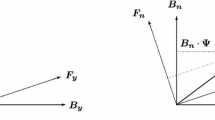Abstract
A recent argument by Hawthorne and Lasonen-Aarnio purports to show that we can uphold the principle that competently forming conjunctions is a knowledge-preserving operation only at the cost of a rampant skepticism about the future. A key premise of their argument is that, in light of quantum-mechanical considerations, future contingents never quite have chance 1 of being true. We argue, by drawing attention to the order of magnitude of the relevant quantum probabilities, that the skeptical threat of Hawthorne and Lasonen-Aarnio’s argument is illusory.
Similar content being viewed by others
References
Chi M. T. H., Ohlsson S. (2005) Complex declarative learning. In: Holyoak K. J., Morrison R. G. (eds) The Cambridge handbook of thinking and reasoning. Cambridge University Press, Cambridge, pp 371–399
Christensen D. (2004) Putting logic in its place. Oxford University Press, Oxford
Douven I. (2006) Assertion, knowledge, and rational credibility. Philosophical Review 115: 449–485
Douven I. (2007) A pragmatic dissolution of Harman’s paradox. Philosophy and Phenomenological Research 74: 326–345
Douven I. (2008) Knowledge and practical reasoning. Dialectica 62: 101–118
Douven I. (2009) Assertion, Moore, and Bayes. Philosophical Studies 144: 361–375
Douven I., Uffink J. (2003) The preface paradox revisited. Erkenntnis 59: 389–420
Foley R. (1992) The epistemology of belief and the epistemology of degrees of belief. American Philosophical Quarterly 29: 111–124
Hawthorne, J., & Lasonen-Aarnio, M. (2009, in press). Knowledge and objective chance. In P. Greenough & D. Pritchard (eds.), Williamson on knowledge. Oxford: Oxford University Press.
Kyburg H. (1970) Conjunctivitis. In: Swain M. (eds) Induction, acceptance and rational belief. Reidel, Dordrecht, pp 55–82
Landauer T. K. (1986) How much do people remember? Some estimates of the quantity of learned information in long-term memory. Cognitive Science 10: 477–493
Makinson D. (1965) The paradox of the preface. Analysis 25: 205–207
Williamson T. (2000) Knowledge and its limits. Oxford University Press, Oxford
Williamson, T. (2009, in press). Reply to John Hawthorne and Maria Lasonen-Aarnio. In P. Greenough & D. Pritchard (eds.), Williamson on knowledge. Oxford: Oxford University Press.
Author information
Authors and Affiliations
Corresponding author
Rights and permissions
About this article
Cite this article
Douven, I., Uffink, J. Quantum probabilities and the conjunction principle. Synthese 184, 109–114 (2012). https://doi.org/10.1007/s11229-009-9693-7
Received:
Accepted:
Published:
Issue Date:
DOI: https://doi.org/10.1007/s11229-009-9693-7




